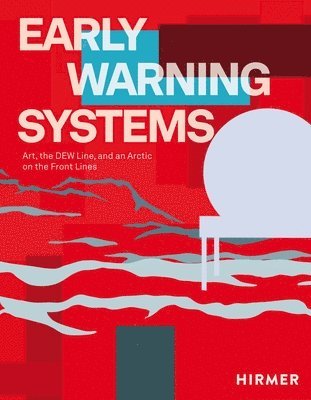Kommande

629:-
The Distant Early Warning Line, also known as the DEW Line, was a system of radar stations in the northern Arctic region of Canada. The Distant Early Warning Line, also known as the DEW Line, was a system of radar stations in the northern Arctic region of Canada, with additional stations along the north coast and Aleutian Islands of Alaska in addition to the Faroe Islands, Greenland, and Iceland. The intent was to detect incoming bombers of the Soviet Union during the Cold War and provide early warning of any sea-and-land invasion. Today, the Arctic is home to new data storage centers and seed vaults, geopolitics, Indigenous rights and sovereignty, and a global climate crisis. The publication looks at the role of artists as early warning systems, as well as other ways we connect and disconnect place and people through technology and the ideas of boundaries. Media critic Marshall McLuhans DEW-Line Newsletter, produced between 1968 and 1970, was an early warning system for the changing age we live in. For McLuhan the DEW Line was a metaphor for the role of art and the artist at a time of rapid social and technological change. The DEW Line was installed across an international Arctic. Today, the Arctic is seen as a place primed for data storage and vaultsdoomsday structures with a utilitarian vernacular of architecture, protecting the knowledge of places further south rather than recognizing the local presence and expertise of place and of Indigenous lifeways and Indigenous science. The reintroduction of military concerns in the Arctic has created a steady reintroduction of army, navy, and air force elements into the region by major Arctic players. Russia under President Vladimir Putin has moved to develop the Arctic as a major component of efforts to boost the Russian economy, feeling the brunt of Western sanctions and economic isolation. Previously abandoned Cold War-era military installations, including radar sites like the DEW Line have been reopened and incursions by Russian aircraft and submarines into or close to other countries Arctic spaces have become more frequent. In addition, as the North continues to be a source of international focus due to threats of climate change, security concerns share space with classical power politics, as the region continues to move away from the strategic periphery and towards an uncertain mainstream. The domes used to shield the radar from the extreme terrain were designed by Buckminster Fuller, who was elaborating upon a symbolic language of security and enclosure. With the DEW Line as a framework, this publication examines ideologies of warning. DEW Line advisors imagined the distant North through the promise of warning as an exercise in boundary-making and as a symbol of a networked future. Today we think about planetary boundaries, the boundaries of survival, and other human limits.
- Format: Inbunden
- ISBN: 9783777443195
- Språk: Engelska
- Antal sidor: 352
- Utgivningsdatum: 2024-12-15
- Förlag: Hirmer Verlag

